Long Meg and her Daughters
OS grid ref. NY 571 372
Occupying a hillside near to the village of Little Salkeld, near Penrith, Long Meg and her Daughters dates from the Bronze Age and is the third largest stone circle in England.
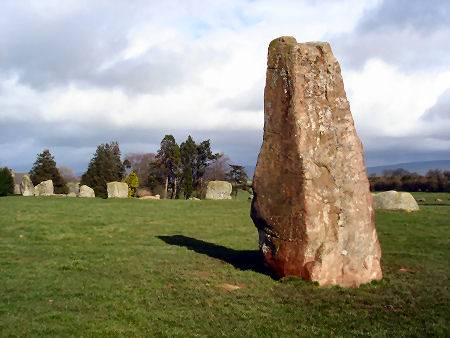
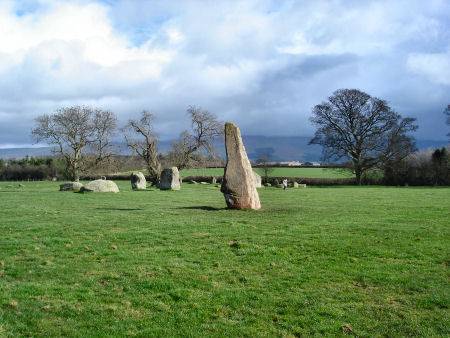
The monument is eliptical in shape, measuring 300 feet by 360 feet and consists of 59 large stones. There are several large outlying stones, the largest of these is know as Long Meg. Written records from the early 17th century suggest that there were as many as 77 megaliths then. Long Meg is composed of local red sandstone, whereas her daughters are boulders of rhyolite, a form of granite.
Long Meg is a 12' high piece of sandstone, on which are carved spiral patterns, known as cup and ring markings, thought to be at least 4,500 years old. The markings have long evoked theories as to their meanings, but remain an enigma. The carvings face away from the circle, which has prompted speculation that Long Meg was erected at a different time period from the circle.
Detail of the spiral patterns on Long Meg
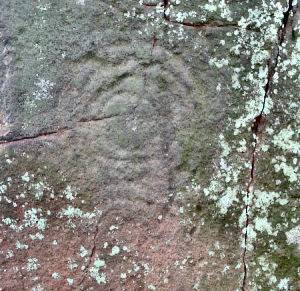
The circle was probably used for rituals associated with the changing of the seasons, the setting midwinter sun is aligned with the column stone of Long Meg.
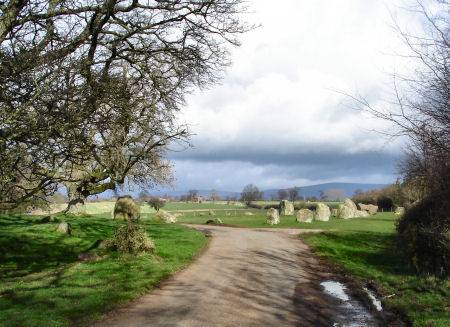
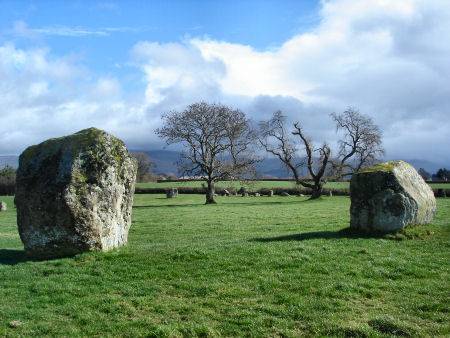
William Wordsworth found the monument a source of inspiration and wrote eloquently of it after a visit in 1822:-
'A weight of awe, not easy to be bourne,
Fell suddenly upon my spirit - cast
From the dread bosom of the unknown past
When first I saw that family forlorn...'
The circle is steeped in local folklore. Legend states that the stones were once a coven of witches found celebrating on the sabbath, when they were turned into stone by either a magician or a saint. Its name is said to derive from that of a local witch, Meg of Meldon, who lived in the early 17th century.
